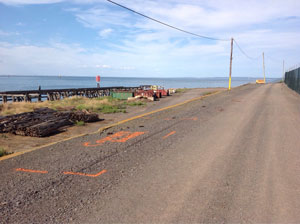Global warming – over the last decade, the effects and consequences have already been witnessed by our planet. Led to the rise in severe weather, climate change has become a threat to the well-being and safety of people worldwide. Utilities is one of the major industries affected by climate change. As per the data, utilities faces the highest risk of damage from various natural hazards like wildfires, storms, hurricane, etc.
With the increase in population and technological advancement, the impact on the utility infrastructure is catastrophic. As per the experts, the higher demand for energy and other utilities is resulting in stretching the limits of the utility capacity and possibly causing outages.
Also, the underground utility infrastructure which was built a few decades back isn’t prepared to withstand climate change. This raises the urgency of disaster preparedness, and we need to look for solutions on an immediate basis!
Climate Change & the Challenges Faced by the Utilities
An increase in global warming and extreme climate changes brings in natural disasters which not only press physical risk on utility but financially as well. From investing in utility engineering to updating infrastructure and repairing the damages, it puts utility suppliers at risk – both financially and physically. Thus, it becomes essential for the utility service providers to become more proactive and resilient in this matter.
Physical Challenges Faced Due to Climate Change
 With population growth, the cities are getting expanded, and more properties are built at the places that are prone to damage caused by climate change.
With population growth, the cities are getting expanded, and more properties are built at the places that are prone to damage caused by climate change.
For instance, as global temperature rises, areas that are susceptible to hurricanes and wildfires are under increasing threat. This expansion needs to be utility companies as well whilst putting their assets and systems at higher risk. Undoubtedly, this increases the rate at which utility services get impacted.
Another Example: Australia is known for its harsh weather and during summer, when the sun is at its peak, the demand for air-conditioners increases. At the same time, they need to be extremely careful to not spark wildfires because of the drought. In a fast few years, utility suppliers are left with no other option but to shut off the power lines to avoid wildfires.
Different Utilities and How They’ll be Affected:
- Electricity – We all are aware of the fact that with global warming increasing, the sea levels are rising which will invite new vulnerabilities. Many power plants are built purposely near oceans to provide water access to it. These power plants are already susceptible to hurricanes, flooding and sea level rising. Meanwhile, there’ll also be a higher demand on energy boards with the rise in temperature and air quality deteriorate.
- Water – Water is an essential amenity not only for residential and commercial use but also for industrial use, irrigation and agriculture as well. Simultaneously, unpredictable weather conditions, extreme temperatures are more likely to disrupt water supply and reduce the groundwater levels and quality.
- Gas – For electricity generation, coal is being replaced by natural gas which increases its consumption as well. Although, there are government regulations towards curbing the demand for fossils and towards an aim of bringing in net-zero emissions objectives, the concerns regarding its supply in future persists.
Financial Challenges Faced Due to Climate Change
Being proactive is always more rewarding than reacting after the worse happens. The same goes for climate change and utility location services. Repairing and restoring the utilities after being damaged are more expensive in terms of money and effort as well. We also know that climate change is just going to get worse, then why not be proactive and engage in mitigation measures for both social and environmental reasons. Before the energy costs and demand for resources rises or risk factors worsen, it’s beneficial for utility companies to enact now and control the damage. Preparing in advance will save future generations from coping with expensive maintenance on infrastructures built in different environmental conditions.
Before the energy costs and demand for resources rises or risk factors worsen, it’s beneficial for utility companies to enact now and control the damage. Preparing in advance will save future generations from coping with expensive maintenance on infrastructures built in different environmental conditions.
As compared to reactionary measures, preventative measures have always proven to be more cost-effective. The earlier investment will help utility companies to be more environmentally responsible and profitable at the same time.
How Utility Companies Can Prepare For Climate Change?
Now is the right time to prevent disruptions that can be caused by global warming, climate change and natural disasters. With the advancement in 3D scanning, predictive analytics, satellite technology and artificial intelligence and the introduction of more cutting-edge technology, one can easily access, collect and analyse data. This makes utility engineering faster, cost-effective and highly accurate.
Listed below are the few tools and technologies that can help in disaster preparedness:
- Vegetation management and risk identification through satellite
- Territory monitoring with the help of AI geospatial modelling
- Monitoring, surveying, and inspecting assets remotely
- High-resolution SAR data and satellite imagery for post-disaster survey
- Target the critical point for preventative upgrades by processing and analysing data through predictive analytics
Stay Abreast on Technology Use in Utility Engineering
If you are a utility location services provider, get in touch with us for a better understanding. Utility companies need to be more cautious and stay abreast with the climate change effect and legal and regulatory changes and introduce preventive methods to minimise the risks posed by the extreme weather condition and climate change.






